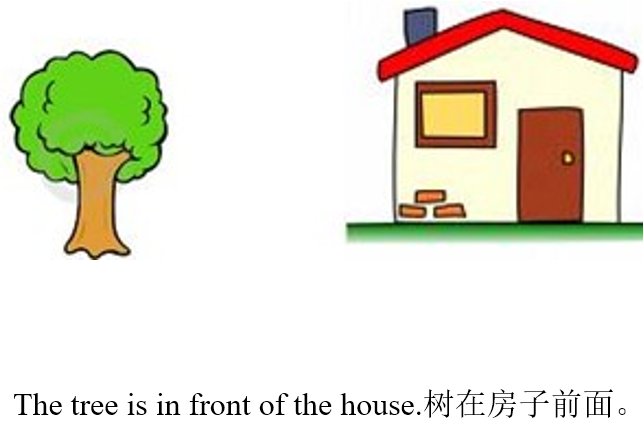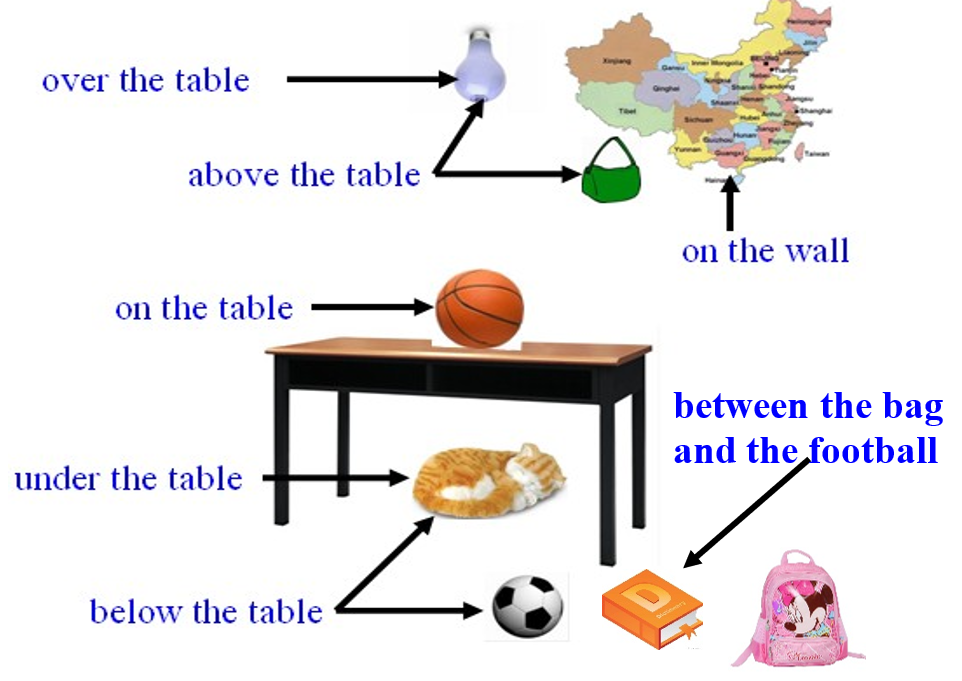第八讲:介词
一.介词的概念(什么是介词?)
置于名词之前,表示名词和句中其他词之间关系的一类词。
二.介词的分类

三.介词详解
1. 表示时间的介词
(1) at
① 表示钟点。
如:at five o’clock在五点钟;
② 表示夜间、中午。
如:at night在夜晚;at noon 在中午
③ 用于某些词组中。
如:at the age of 在……岁时;at the weekend在周末;
at this time of the year在一年的这个时间;at the beginning of 在……开始时;
(2). in
① 表示上午、下午或晚上。
如:in the morning在早晨;in the afternoon 在下午 in the evening 在(睡觉前的)晚上
② 表示一段时间,如世纪、年份、季节、月份。
如:in February 在二月; in 2012在2012年;
in winter 在冬季;in the twenty-first century 在21世纪
(3) on
①表示星期或具体的日期。
如:on Sunday 在星期天;on May 1 在5月1日;on July 7, 2012 在2012年7月7日
②表示具体的上午、下午或晚上
如:
on Sunday afternoon 在星期日下午;
on the morning of October 10 在10月10日上午;
on a cold night 在一个寒冷的夜晚
(4) during意为“在……期间”。
如:The cat sleeps during the day. 猫在白天期间睡觉。
His father was killed during the war.他的父亲在战争期间被杀死。
We’ll visit the Great Wall during the summer holiday.
暑假期间,我们将去参观长城。
(5) before表示“在……之前”。
如:I will be back before six o’clock. 我将在六点前回来。
(6) after 表示“在……之后”。
如:My father often takes a walk after supper. 我爸爸晚饭后经常散步。
注意:英语中时间状语不用介词的情况
①在this,that,these, those等组成的时间短语不用介词。
如:We are going to Qingdao this month. 我们这个月打算去青岛。
② 由next或last构成的时间短语前不用介词。
如:When did you go to bed last night?
③today, yesterday, tomorrow等词或由它们构成的时间短语前不用介词。
如:I went to see Xiao Ming yesterday.
Can you be here at eight tomorrow morning? 你明早八点能在这里吗?
④ 在含有every, some, all等词的时间短语前不用介词。
如:He visits his grandpa every week.
2. 表示地点、方位的介词
(1) at表示较小的地方。
如:We are waiting at the bus stop.
(2) in表示较大的地点或“在……里面”。
如:He lives in Beijing. 他在北京生活。
The book is in my bag. 那本书在我的包里。
(3) on表示“在……上面”,两个物体的表面相接触。
如:Your book is on the desk. 你的书在桌子上。
The map is on the wall. 地图在墙上。
(4) behind表示“在……后面”。
如:What are you doing behind the door? 你在门后做什么?
(5) over表示“在……正上方”,两者表面不接触。
如:The bird is flying over the building. 那只鸟正从楼上方飞过。
(6) above表示“在……上方;高于”, 两者表面不接触。
如:The book is on the shelf just above your head. 那本书就在你头上方的书架上。
(7) under表示“在……正下方”。
如:There is a cat under the table. 桌子正下方有一只猫。
(8) below表示“在……下面”,不一定是正下方。
如:The cat and the football are below the table. 桌子下方有一只猫和一个足球。
(9) between 表示“在两者之间”。
如:He is standing between Jim and Kate. 他站在吉姆和凯特中间。
(10) in front of sth.在某物的前面(在某物外面)
in the front of sth.在某物内部的前面


(11) 介词from用于出发地,to用于目的地。
如:How far is it from your home to school? 从你家到学校有多远?

(12) before表示“在……之前”。(=in front of)
如:He stood before the desk. 他站在桌子前面。
3. 方式介词
①with表示用什么工具,所用的东西都是具体的物。
如:Please cut the apple with a small knife.
We write with our hands.我们用手写字。
② by通常与bus, train, plane, bike等词连用,表示交通或通讯手段。
如:He always comes by bus.
Let’s go by taxi.
③ in表示用某种语言。
如:
They are talking in English.
④ on表示以某种方式,多用于固定词组。
如:He learns English on TV.
4. 其他介词
① about 意为“关于”。
如:He talked about his family.
This is a book about American history.
② like意为“像……一样”。
如:He looks like his father.







